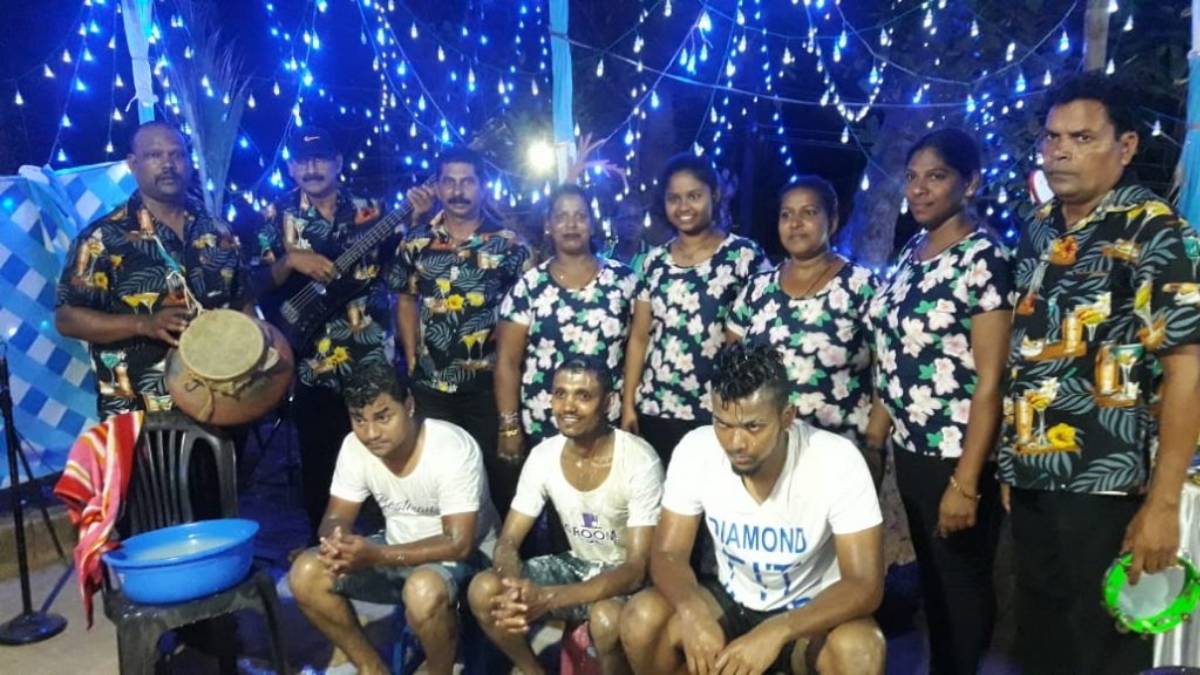In the culturally diverse land of India, the Roce Ceremony holds immense importance for the Catholics in Goa. It is a pre-wedding ritual that takes place before a Catholic wedding and is celebrated with enthusiasm and vigor. The Roce Ceremony is deeply cherished by Goan Catholics. This article presents endearing ideas to make your Roce Ceremony an unforgettable affair, covering various aspects such as the significance of the ritual, venue selection, decor inspiration, outfit choices, and entertainment options.
Significance of the Ceremony
The Roce Ceremony marks the transition of a person from the phase of bachelorhood and spinsterhood to the phase of married life for a groom and a bride respectively. It is usually held a couple of days before the Catholic wedding and involves the anointing of the couple with freshly squeezed coconut milk, known as Ros, and coconut oil. The use of coconut in the Roce Ceremony is deeply rooted in Goan culture, where coconut holds great importance due to its abundance in the region. Coconut is not only a staple in Konkani cuisine, but it is also considered a holy offering in Konkani traditions.
Coconuts represent nature’s blessings and gratitude for the abundance bestowed upon us. The ritual begins with a family prayer in the morning, followed by the mother of the bride/groom drawing a cross on their foreheads and pouring a few drops of coconut milk in their ears. This act is believed to bless the couple and clear their ears, symbolizing the importance of listening to each other in a successful relationship. Family members, siblings, and friends then take turns anointing the couple with the Roce, culminating in pouring the remaining Roce on their heads. It is a joyous occasion where friends playfully break eggs, pour beer, and whipped cream on the couple’s heads.
Venue for the Roce Ceremony
The Roce Ceremony is known to get messy, so it is typically held in an open space. In Goa, the front yard of the house is a traditional venue for the Roce Ceremony, while the terrace also serves as an appropriate location. However, if these options are not available, any Goan wedding venue can be chosen to accommodate this important ceremony. Booking a wedding lawn or a spacious banquet hall based on the guest list can create an amazing atmosphere for the Roce Ceremony. For nature enthusiasts, nearby gardens or lakesides can be considered, but it’s important to obtain the necessary permits. Another interesting option is to host the Roce Ceremony poolside, adding a fun and exciting element to the celebration.
Decor for the Roce Ceremony
The Roce Ceremony is steeped in traditions and requires attention to detail in terms of decor. Traditionally, it is held in a Mattov, a hut made from dried and woven palm leaves, areca nut palm leaves, and coconut leaves. The Mattov is adorned with fresh flowers, palm leaves, and coconut leaves. While honoring the traditional elements, modern variations of the decor are also acceptable.
- Recreate the traditional Mattov in a modern way by using dried palm and coconut leaves as a backdrop.
- Incorporate coconut shells into the decor for an authentic touch.
Alternatively, you can explore other decor options:
- Opt for a floral theme, using floral wreaths, garlands, centerpieces, bouquets, and even rangolis.
- Create a focal point by setting up an altar that draws attention.
- Usewhite, pastel, or colorful drapes and fairy lights to add a whimsical touch to the Roce Ceremony decor.
For a more personalized touch, consider choosing a theme for your Roce Ceremony decor. You can base it on your favorite color, activity, celebrity, movie, or anything that holds meaning to you. Incorporate elements related to your chosen theme, such as posters of your favorite movie, balloons, or flowers in your favorite color.
Dressing for the Roce Ceremony
Traditionally, the bride drapes her mother’s wedding saree around her waist as a skirt, paired with a blouse, while the groom wears a lungi with a kurta. However, modern interpretations allow for flexibility in outfit choices. Here are some options for both the bride and groom:
Bride:
- Gowns
- Dresses
- Sarees
- Salwar and kameez
- Kurta and churidar
Groom:
- Kurta and pajama
- T-shirt/shirt and pants
- Light sherwani
Food served at Roce Ceremony
Following the Roce Ceremony, a feast known as “Rosache Jevon” (Roce feast) is typically enjoyed. Despite the modifications made to the Roce Ceremony over time, Goans still prefer traditional Goan food to honor their culture. The feast includes a variety of Goan delicacies, such as fish, chicken, mutton, or pork curry with coconut, prawns, vegetables with cashew, and Goan Sannas (fluffy rice cakes).
While traditional Goan food is preferred, there is flexibility in the choice of dishes. You can select your favorite foods or even opt for theme-based cuisine. Work with your caterer to create customized desserts or drinks that add a personal touch to the feast. Your guests will appreciate the special attention to detail, making your Roce Ceremony even more memorable.
Dancing, Music, and Celebration
While the Roce Ceremony is a significant custom, it is also an occasion for joy and celebration. After the feast, it is customary for the bride and groom to dance with their family, friends, and guests. Incorporate fun activities and entertainment to make the event lively. Consider the following:
- Hire a DJ to play a selection of tunes that will get everyone on the dance floor.
- Create a playlist of your favorite dance numbers to ensure the music reflects your personal taste.
- Arrange party games to engage guests and add a playful element to the celebration.
- Encourage family members, siblings, nieces, and nephews to perform skits and other entertaining acts.
- Set up a karaoke machine to allow guests to showcase their singing talents.
With dancing, music, and a range of entertainment options, your Roce Ceremony will be a night of celebration and joy, making it an unforgettable experience for everyone involved.


